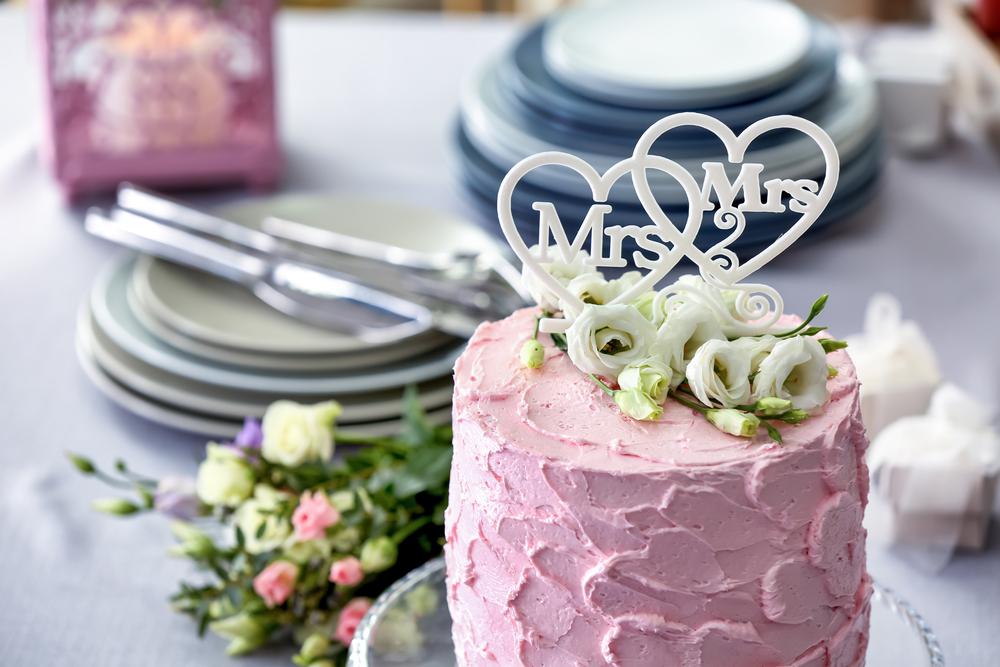Five Ideas for Same-Sex Weddings

With same-sex marriages being legal in the United States, many couples are solemnizing their union as partners in ceremonies that resemble the traditions common in heterosexual weddings. Gay or straight, there are only a few requirements that make a marriage legal, and none of them involve an expensive white dress or a stirring rendition of “Here Comes the Bride.” You’ve found the person with whom you want to spend the rest of your life, and the feeling is mutual. What does your special day look like? While it should be everything you and your future spouse want, here are some things to consider.
1. Choosing a Wedding Party
In most Western wedding traditions, a bride and groom are usually accompanied by a wedding party featuring bridesmaids, groomsmen, a ring bearer, and a flower girl. The aesthetic is usually based on a male-female binary, which likely doesn’t exist with a same-sex union. Many LGBTQ+ couples are often surrounded by a chosen family of people who love and support them unconditionally. Consider ditching this wedding-party approach. Have a small group of your nearest and dearest surround the two of you at the altar. You can even go simpler, with each of you picking one person, a bestie or family member, of any gender as formal witness.
2. Finding LGBTQ-Friendly Venues and Vendors
Although same-sex weddings are legal, not every wedding-related business is on board. You may have envisioned a particular venue or other special details for a dream wedding; however, dealing with a supplier who is not LGBTQ-friendly can lead to a nightmare. This is especially true if you’re planning a destination event that’s out of the country. Look into wedding professionals who cater to same-sex couples. You’ve found love, and you deserve nuptials that are joyous and free of bigotry and subpar service.
3. Wearing It Well
Some LGBTQ couples love white gowns and black tuxedos for the big day. Your attire should be a reflection of your individual personalities as well as your connection as a couple. Feel free to do something different than traditional wedding garb for your marriage ceremony. Some couples will opt for matching outfits, but it’s important to feel comfortable in your skin. Wear something that is appropriate for the occasion, climate, and most of all, your identity.
4. Reinventing the Wedding Aisle
Another common custom involves the wedding aisle. Members of the party will walk down the aisle to the altar. Typically the bride is the last to walk down the aisle, meeting the groom at the altar. In a same-sex union, this approach may be a bit old-fashioned, if not absurd. Consider a ceremony where the two of you walk to the altar together, symbolizing your journey as a couple up to this point. If you like the symbolism of coming together at the altar, consider a venue with two aisles. Each of you walks down one aisle separately, and you come together as a pair before exchanging your vows.
5. Planning Your Reception
What’s a special day without a reception to celebrate? The reception is an opportunity for newlyweds to “drink and be merry” among loved ones, and yours will be no exception. There are many reception customs that same-sex couples will want to incorporate, such as a first dance, champagne toasts, and cutting of the cake. Some traditions, such as the tossing of a bouquet or a garter, are based on gender and may not be right for you. Give some thought to your reception and consider activities that will make the occasion all the more special.
Same-sex weddings aren’t any different than straight ones when it comes to legal requirements. LGBTQ+ people are free to create the nuptials of their dreams. It’s your marriage ceremony and you can celebrate how you want to, but these tips can help you with planning.














